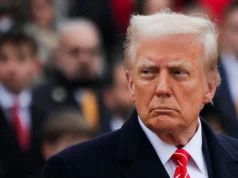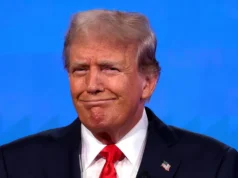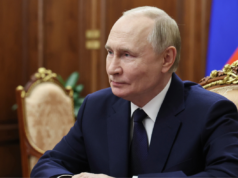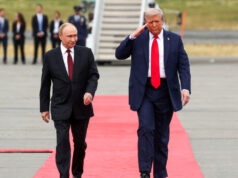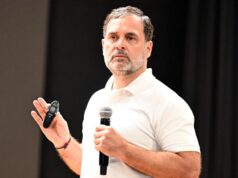Beijing’s macroeconomic policies this year have adequately taken into consideration a number of uncertainties, according to Chinese Premier Li Qiang.
After US President Donald Trump put a startling 104% tariff on all Chinese imports on Tuesday, China and the US took a step closer to a full-scale trade war. Both countries refused to give up in a high-stakes game of brinkmanship, with Beijing promising to oppose American aggression “to the end.”
Initially, Trump had announced a 34% increase in tariffs on Chinese goods. However, Washington promised to levy an additional 50% duty once Beijing put its own tit-for-tat 34% tariff on American goods. When additional tariffs are added to the current levies that were levied in February and March, the total tariff rise for Chinese imports under Trump’s second term is 104%.
China’s Reaction
The US blackmail was denounced by Beijing, which promised to “fight it to the end.”
Chinese Premier Li Qiang said his country is prepared to “fully offset” any negative external shocks during a Tuesday call with European Commission President Ursula Von der Leyen. He also reaffirmed his optimism about “maintaining sustained and healthy economic development” of the world’s second-largest economy in 2025, despite the US President’s most recent tariff threat.
President Xi Jinping’s “Number 2” described the punitive action on all U.S. trading partners as a classic illustration of U.S. economic coercion, protectionism, and unilateralism, and stated that China’s macroeconomic policies this year have completely taken into consideration various uncertainties.
He went on to say that China is taking a tough stance in order to protect international trade regulations as well as its own interests.
According to a Bloomberg article, Li said Von der Leyen, “Openness and cooperation are the right path for everyone – protectionism leads nowhere.” The additional tariffs follow Beijing’s retaliation against Trump, who refused to back down even after key US indexes fell more on Tuesday.
The China-EU call was made just hours before Trump’s so-called reciprocal tariffs, which would have imposed an additional 20% tax on Europe, were scheduled to impact both economies.
Trump’s Trade War
Since Trump’s baseline 10 percent tariffs went into force over the weekend, the world economy has been shaken, causing a sharp sell-off in markets around the world and raising concerns about a recession. Import rates to the US from dozens of economies are increasing since Wednesday.
By compelling businesses to relocate to the US, the US president hopes his strategy would revitalize America’s lost manufacturing base. Many economists and business experts, however, doubt how soon, if at all, this can happen and warn of increased inflation as a result of the tariffs’ price increases.
The US is “taking in almost $2 billion a day” via tariffs, according to Trump’s statement on Tuesday.
Who Tariffed The US?
Canada said that its tariffs on specific US auto imports will take effect on Wednesday after Trump refused to back down from his promises.
Next week, the EU, which Trump has harshly lambasted for its tariff policy, might also reveal how it would react to the new 20 percent taxes it must contend with. Trump should think again, French President Emmanuel Macron said, adding that if the EU had to react, “so be it.”
According to a document seen by AFP, the EU intends to impose up to 25% tariffs on American goods, from motorbikes to soybeans, in retaliation for US steel and aluminum duties that went into force last month.
Tailored Deals?
Trump announced on Tuesday that his administration was negotiating “tailored deals” with trading partners, with the White House stating that it will give priority to allies such as South Korea and Japan.
Argentina, Vietnam, and Israel are among the countries that have offered to lower their tariffs, his senior trade official Jamieson Greer told the Senate.
Despite China’s reaction and mounting domestic criticism, Trump has ruled out any halt in his strong posture.
